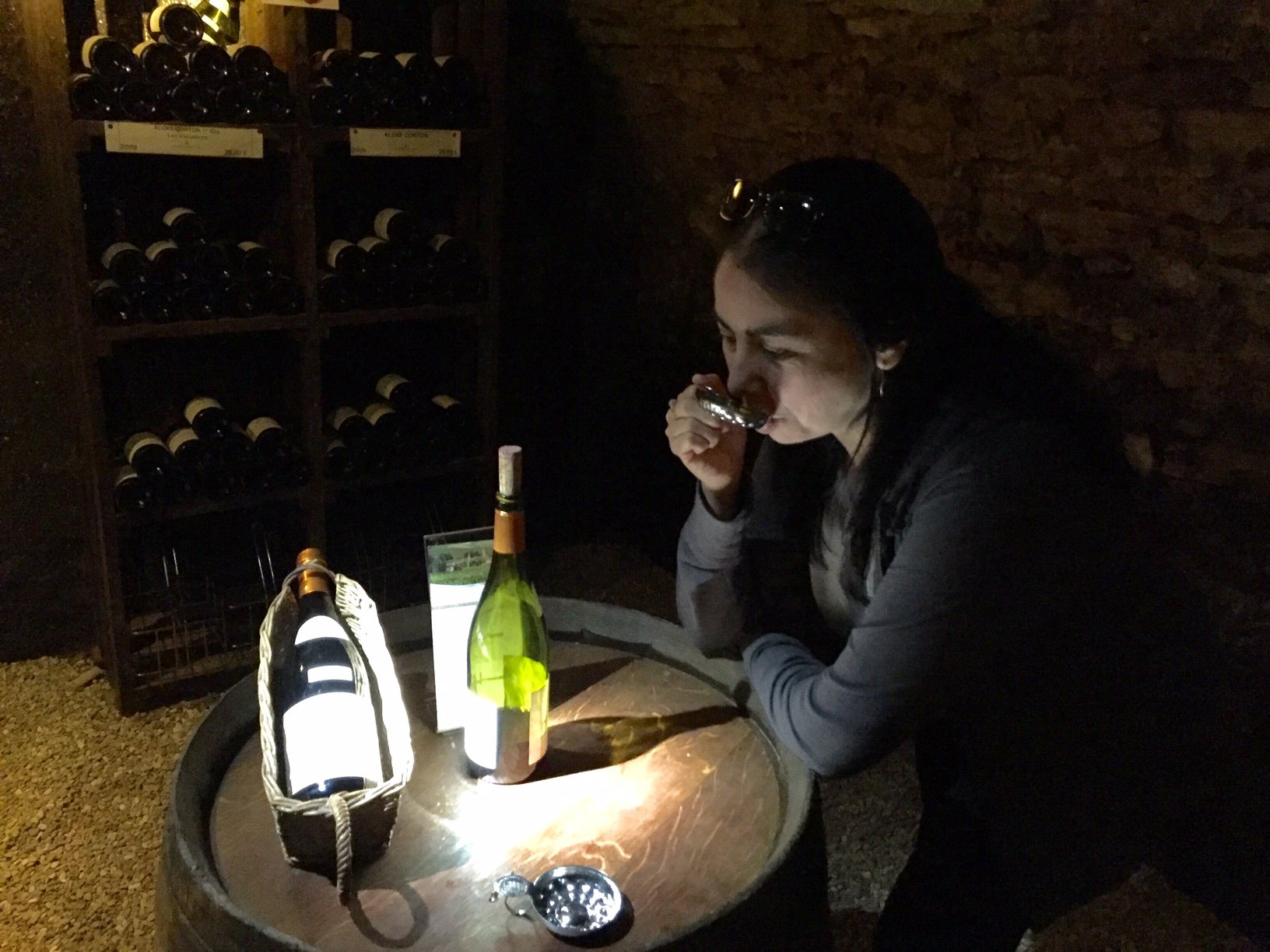Bourgogne

Last summer, my wife and I traveled to France to learn more about French wines, and we started confidently in Bordeaux, thinking this would be our high water mark. After nearly a week in Bordeaux, we flew to Lyons, and then took a train north to Beaune. Beaune is in the heart of the Côte d'Or, the most famous (and most central) region of Burgundy. It's a beautiful medieval village, easy to navigate, but hard to pronounce. When we got there, I was saying "bone"; my wife was saying "boone"; but it turns out the right way to say it is . . . well, imagine Elmer Fudd trying to say "burn."
Burgundy, or Bourgogne, has five separate regions (technically six if you count the Beaujolais district) and with a few exceptions, the reds are 100% Pinot Noir and the whites are 100% Chardonnay. On a map, it sort of looks like the Philippines, since the regions are broken up, running north to south. We were there for only three days, and we left under a cloud since I'd gotten the worst case of food poisoning in my life. Undercooked duck—who knew?
Unlike the much larger Bordeaux region, with its (quirky) 1855 classification by price, the Burgundy region is classified by terroir, focusing not on the individual chateaux but on the specific vineyards, and these are divided into four levels of quality. At the very top are the Grand Cru vineyards, and there are only 37 of them, all but one of these found in the Côte de Nuits or Côte de Beaune—the two regions that make up the Côte d'Or. They account for around 2% of all Burgundy wine. The next level down is the Premier Cru (often written out as 1er Cru). The best wine I tasted in Beaune was a bottle of Pommard Premier Cru, and this second level accounts for around 10-12% of the total yield. The third level are vineyards that are demarcated "village," and the name of the local village will be printed on the label. These make up 30-35% of all the wines of Burgundy. The remaining 50% are classified as regional, so their label will read simply "Vin de Bourgogne."
The most highly regarded Grand Cru estate is Domaine de la Romanée-Conti, comprised of seven Grand Cru vineyards, including La Tâche and Richebourg. La Romanée, the smallest of the seven, is a mere two acres, producing around 450 cases a year. A single bottle of wine from this vineyard, even a recent vintage (2014), can be yours for . . . $12,000. I'll give you a moment to pick yourself up off the floor. To be fair, the 2014 vintage was highly rated, so a bottle from a lesser year could be practically stolen for a mere $2,000. I feel better already.
While in Beaune, we toured a winery, spent an afternoon tasting and learning about Burgundy wines, and wandered through the underground cellars of Patriarche Père & Fils (and I tossed my cookies five times in one night—a new record, I think; seriously, undercooked duck). We generally drank only red wine, and each bottle was different from the one before. These were all Pinot Noirs, but they weren't at all the same.
The best experience, by far, was the underground cellars. Underneath the town of Beaune are miles and miles of wine cellars, and Patriarche Père & Fils lays claim to a full three miles of tunnels. For an entry fee of 20€, you're given a traditional steel sipping cup and set loose to wander by yourself. I had always imagined touring an ancient wine cellar and picking up a dust coverered bottle; I just hadn't imagined touring three miles of wine cellar. There are millions of bottles stored in cellars underneath the town of Beaune, and that's not a made up number. Also, surprisingly, there was no one watching us, unless they have an elaborate series of infrared cameras running throughout their three miles of wine tunnels. Good luck with that. There was just the absolute freedom to wander and taste.
Okay, so before you imagine my stealthily opening dozens of fifty-year-old bottles of wine—and the thought did cross my mind—the tasting was limited to roughly twelve different wine stations, where an open bottle sat atop a wine barrel with a small lamp guiding you to it. There, you would help yourself to the wine, using your little wine tasting cup; they call it a Tastevin if you want to look it up. It held maybe an ounce of wine, so if you didn't catch the subtle flavors on the first pour, you could always try again. When we got to the last barrel, an 80€ bottle of Pommard Premier Cru (see above), it took me something like five or six tries until I felt I really tasted that wine . . . and then another five or six pours just to be sure.
If you liked a wine, they had bottles near each barrel, along with a metal shopping basket which held maybe six at a time. The first wine we tasted was only 8€, and the prices moved up gradually until that last bottle of Pommard. We were down there for probably an hour and a half until we'd had our fill, and as we left, we passed through an archway with a quote by the Sun King, Louis XIV, etched overhead: "Le Vin de Bourgogne est Le Vin des Rois." I felt we had, indeed, tasted the wine of kings.